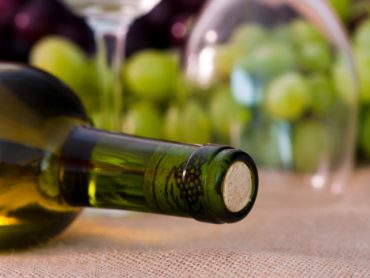In Vino Veritas, Part XXIV: Organic Wines
Everybody is going organic these days — fruits, vegetables, meats, grains and now alcoholic beverages (and that’s only including food products). The trend makes sense, too — people are concerned about what chemicals are being added to foods and how they affect their health. Many pesticides, herbicides, additives or genetically modified foods aren’t great for you long term, and going organic nullifies many of these potential concerns.
In terms of psychographics, the three basic mindsets to consider are:
- Devoted: Those whose diets are mostly or completely organic food and who go out of their way to uphold their nutritional beliefs
- Dabbling: Those who understand the benefits of eating organics and will purchase such foods when presented the opportunity but aren’t strict about adhering to any restrictions
- Disinterested: Those who don’t care either way and might even be turned off by the extra markups associated with organic foods
For people in the “devoted” category, placing an organic white wine and an organic red wine on the menu is a must. They shouldn’t have to break their stringent dietary regimens in order for you to sell them something. On the other hand, this group is small — albeit growing — and quite niche, so you shouldn’t worry about building an entire organic wine list to appease these people. One white and one red will suffice; use accepted international grape varietals like sauvignon blanc and merlot. (Try to kill two birds with one stone by sourcing locally as well.)
Meanwhile, those in the “disinterested” category probably won’t be insulted by the existence of an organic wine on the menu, but they are equally unlikely to purchase such a bottle. For people in this camp — the present-day majority, I might add — the going belief is that while efforts in organic winemaking are commendable, on average the prestige and the overall flavor aren’t yet up to snuff with established wineries.
This is the biggest hurdle for sales and keeping organic bottles stocked. Devotees won’t bring you enough revenues on this front because they are too few. And the brief conversation your server has with disinterested patrons shouldn’t be dedicated to convincing them to change their minds.
It’s the middle ground that’s the battleground — the “dabblers.” This is the group that recognizes the organic food movement but won’t commit itself to strict observance of the rules likely because it’s logistically (and monetarily) impossible. The dabblers have quite the range, from those who are sometimes organic eaters to those who only partake once in a while but still keep an open mind to the underlying significance of it all. They might opt for an organic bottle with minimal cajoling, or at least respect your efforts in this regard.
The best way to sell to dabblers, or the disinterested, is on the health factor — no chemicals or preservatives and made with better-quality sugars (as a result of the differences in viticultural processes). You also have to dispel the underlying skepticism that these wines aren’t as flavorful as other labels in the same price range. These rumors are baseless, as organic winemaking has been perfected for several decades now.
As talking points, here are some other tidbits you might want to know. Organic wines are touted as “sulfur-free.” Sulfites are an important additive for stabilization during the aging process, and thus most organic wines are destined for young consumption (within three years). Next, while certain countries have organic certifications in place, many vineyards and wineries already abide by most of these standards but choose not to go through with obtaining official status because of the costs associated with going that extra (and seemingly unnecessary) mile.
The bottom line: one white and one red is all you need for now, but feel free to add more if the demand is there. When the organic trend gains more ground then you should definitely consider expanding this part of the wine list.
(Article published by Larry Mogelsonky in HOTELSmag on July 18, 2014)




